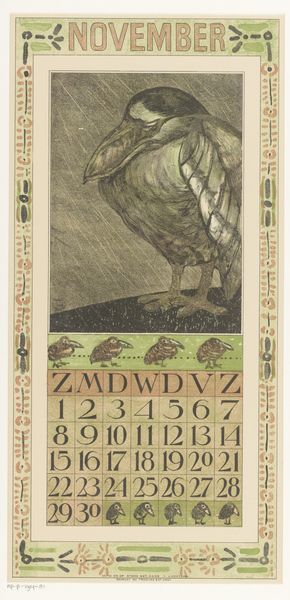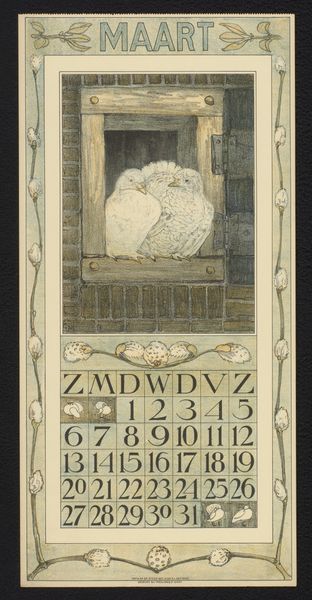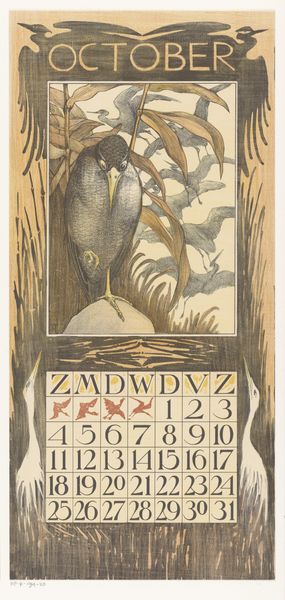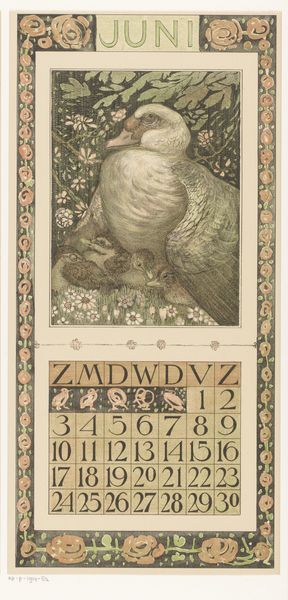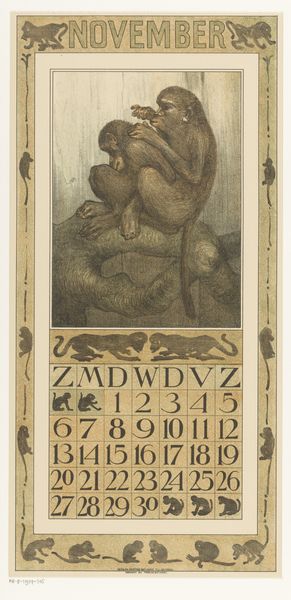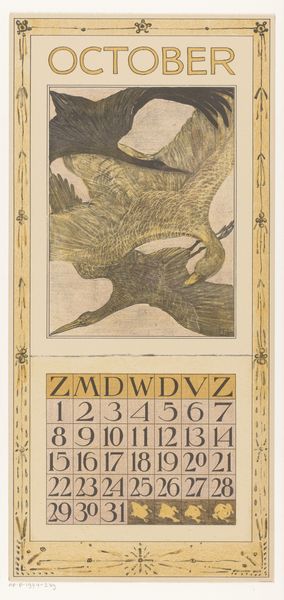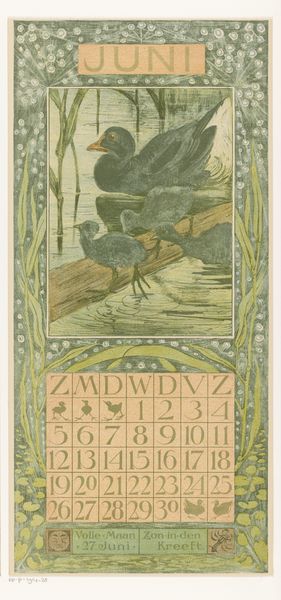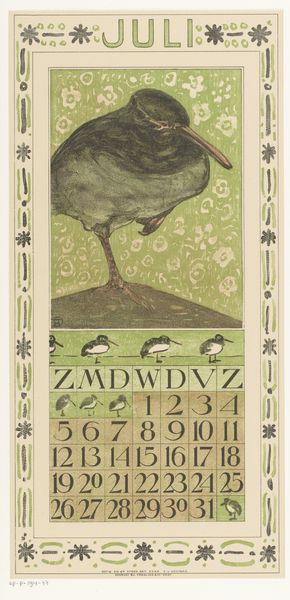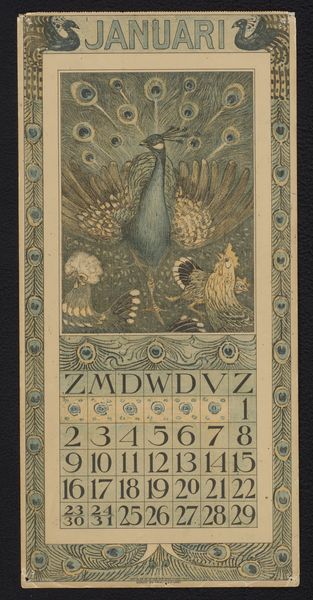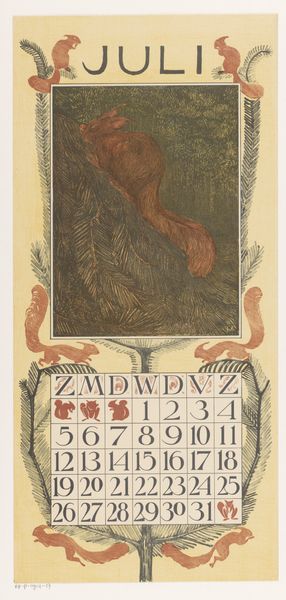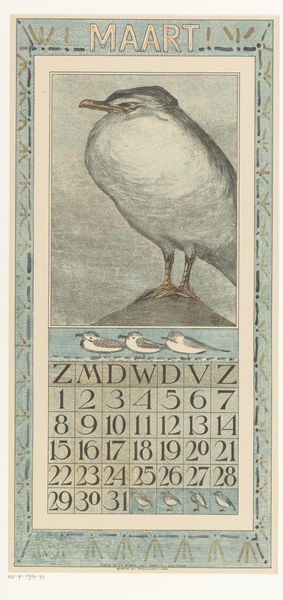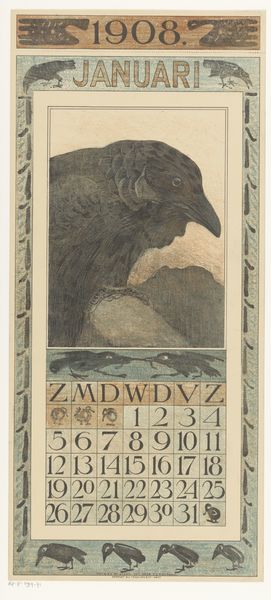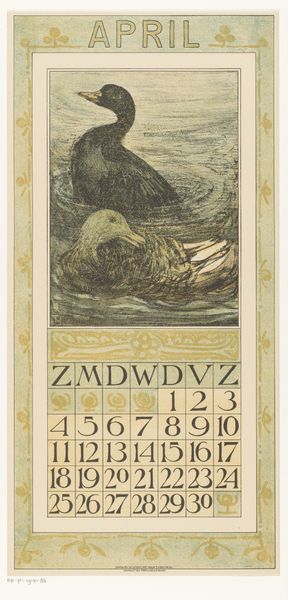
drawing, graphic-art, print, woodcut, poster
#
drawing
#
graphic-art
#
art-nouveau
#
animal
# print
#
woodcut effect
#
figuration
#
woodcut
#
poster
Dimensions: height 440 mm, width 210 mm
Copyright: Rijks Museum: Open Domain
Editor: This is Theo van Hoytema’s "Kalenderblad juli met drie kuifkippen" – July Calendar Sheet with three crested chickens – from 1909. It seems to be a woodcut print. The chickens have such a unique look, so stately and self-possessed. What do you see in this piece beyond just a calendar page? Curator: I see a fascinating commentary on the burgeoning industrial era and its impact on traditional agrarian life. Hoytema, deeply involved in the Arts and Crafts movement, often depicted animals with a certain dignity, almost a subtle protest against mass production and the commodification of nature. Editor: So the chickens aren’t just chickens? Curator: Not at all! Consider the Art Nouveau style – that decorative framing, the stylized flowers, the almost obsessive detail in the chickens’ plumage. This style embraced craftsmanship and organic forms as a direct challenge to industrial uniformity. Hoytema’s choice of subject, rendered with such care, elevates these creatures. Are they a reminder of a simpler time? Are they a symbol of resilience and authenticity in a world increasingly dominated by machines? And why July? Think about what the animals could symbolize in terms of abundance, as the seventh month is often the apex of growth season. Editor: That's a really interesting way to look at it, framing the chickens as a resistance symbol! It never would have occurred to me that a calendar page could carry so much weight. Curator: Art has layers. By looking through social and historical contexts, the meanings multiply, revealing more than meets the eye.
Comments
No comments
Be the first to comment and join the conversation on the ultimate creative platform.
